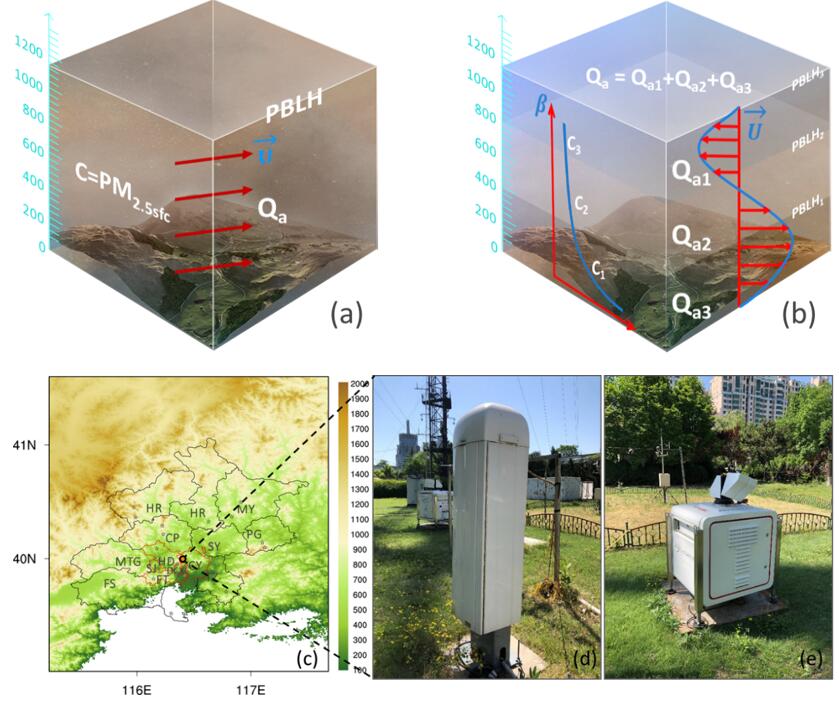
Atmospheric environmental capacity (AEC) is an important basis for setting standards of urban and regional atmospheric pollutant emission. Accurate quantification of AEC in the atmospheric planetary boundary layer (PBL) plays a vital role in the prevention and control of air pollution.
Since the meteorological conditions in PBL are constantly changing, the AEC is a dynamic variable. Fine-resolution vertical observations show that aerosol, such as PM2.5, has a significant layered structure in the PBL, and the single-box hypothesis in the traditional algorithm is inconsistent with reality.
Researchers led by Prof. XIN Jinyuan with the Institute of Atmospheric Physics of the Chinese Academy of Sciences and their collaborators proposed a new algorithm for dynamic multi-box AEC.
The study was published in Science of The Total Environment.
Compared with the traditional A-value method, the new algorithm uses coefficient A calculated by high-resolution ceilometer and Doppler wind profiler lidar to replace the regional empirical coefficient A.
Based on Lettau dynamic balance model, time coefficient was added to construct dynamic AEC. The backscattering coefficient profile was used to integrate the concentration of particulate matter inside the PBL, and the multi-box model was adopted in the vertical direction to make it suitable for PM2.5 and other particulate matter.


86-10-68597521 (day)
86-10-68597289 (night)

52 Sanlihe Rd., Xicheng District,
Beijing, China (100864)

